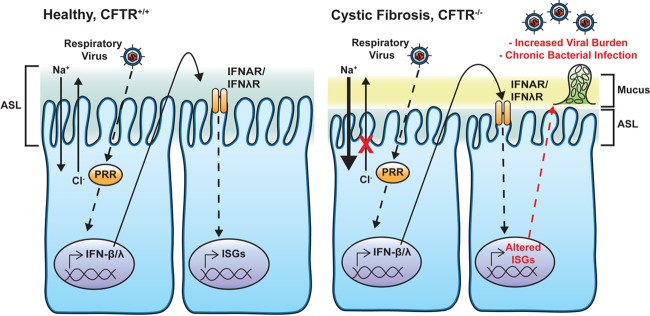FIG 1.
Epithelial responses to respiratory virus infection in AECs from healthy persons and cystic fibrosis (CF) patients. In CF patient AECs, mutations in the CF transmembrane conductance regulator (CFTR) ion channel lead to reduced chloride (Cl−) secretion and increased sodium (Na+) uptake, resulting in a depleted airway surface liquid (ASL) level and increased mucus buildup, impairing mucociliary clearance of pathogens from the airway. CF and non-CF AECs recognize viral infection through PRRs, which lead to the production of type I and III IFNs (IFN-β and -λ, respectively). These molecules are secreted from AECs and act in an autocrine and paracrine manner to signal through their cognate receptors, the IFN-α/β receptor (IFNAR) and the IFN-λ receptor (IFNλR), respectively, to induce the expression of antiviral mediators (i.e., ISGs). CF patient AECs have defects in ISG production, resulting in an increased viral burden. The innate immune response to respiratory viral infection also enhances bacterial colonization and P. aeruginosa biofilm growth.

